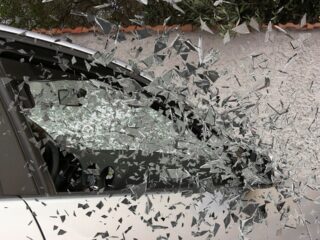This ruling involves a motion brought by the defendant for leave to call more than three experts at trial, and more specifically, a physiatrist and an orthopaedic surgeon.
The facts are fairly simple. The plaintiff was involved in a head-on collision on January 10, 2017 and claimed that as a result of this crash, she sustained the following injuries: tear to the muscles in the right shoulder; whiplash; chronic headaches; severe back pain, including two bulging discs; insomnia; mood disorders; post-traumatic stress disorder; chronic pain; cognitive deficiencies including poor memory, poor attention and impairment of mental functioning.
The defendant admitted liability but denied causation. At the start of the jury trial, the defendant brought a motion for, among others, leave to call more than three expert witnesses at trial, and in particular, leave to call Dr. Berbrayer, a physiatrist in addition to Dr. Lee, an orthopaedic surgeon. The defence argued that the two experts would provide opinion evidence on unique and distinct issues as they both have different areas of specialty.
The plaintiff objected on the grounds that calling both doctors was a duplication of evidence and a disadvantage to the plaintiff.
Woodley J. started his analysis with section 12 of the Evidence Act which states that a party may not call more than three experts to provide opinion evidence without leave of the court. While in this case, the defence proposed to call five experts, the plaintiff only objected to Dr. Berbrayer testifying in addition to Dr. Lee. Regardless, the court went on to list the factors to consider on such a motion, those being:
a) any objection by the opposing party;
b) the number of expert subjects in issue;
c) the number of experts each party proposes to call on each issue;
d) the number of experts customarily called in similar cases;
e) whether leave would disadvantage the opposing party;
f) the necessity of calling more than three experts;
g) any duplication of the opinions; and
f) whether the time and costs are disproportionate.
The court found for the defence and ruled that both experts were permitted to testify (assuming that were both properly qualified at trial). In reaching this conclusion, Woodley J. relied on McNamee v. Oickle, 2020 ONSC 432 where the court accepted that in chronic pain cases, “it is not unusual to have more than one expert – each with different expertise – to comment on the issue of causation.” He then acknowledged that while the reports prepared by the two experts were “strikingly similar, the underpinning of the expert reports is strikingly different.” He noted that they each had different specialties and expertise but, more importantly, that Dr. Yee would express an opinion on the plaintiff’s back injuries and whether she would require back surgery (an issue that Dr. Berbrayer was not qualified to address), while Dr. Berbrayer would provide evidence on whether the plaintiff’s post-concussive symptoms would impact her function, on her course of rehabilitation, and on her ability to return to normal activities (all issues that Dr. Lee was not qualified to testify to).
Woodley J. went on to conclude that while the reports of the two experts contained similar observations and conclusions, this was not the kind of duplication that would warrant exclusion. His Honour stated:
“There is no prohibition against duplication. The case law prohibits undue duplication.”
The plaintiff’s argument that she would be disadvantaged by the admission of Dr. Berbrayer since she had not retained an expert physiatrist, was also rejected. The court noted that the plaintiff had been served Dr. Berbrayer’s report before trial and that she had been treated by a physiatrist herself, and as such she could call him as a “participant expert” or a “treating physiatrist.”
Finally, the court clarified that multiple experts would only cause a disadvantage where “there is a ‘piling on’ of experts,” which the case before the court did not support.











